MARIANI’S
Virtual
Gourmet
December
7, 2014
NEWSLETTER
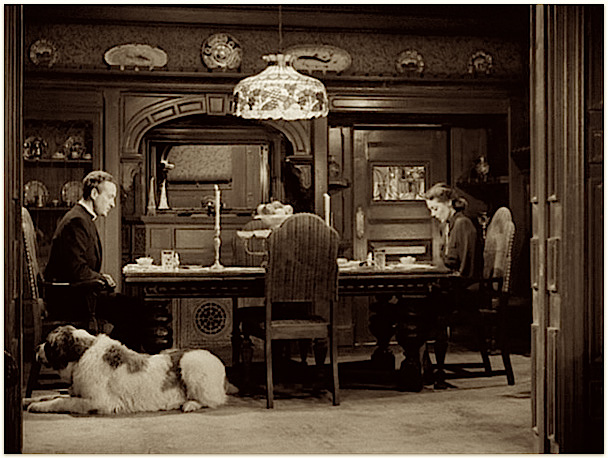
IN THIS ISSUE
Christmas in Canada
By John Mariani
NEW YORK CORNER
Kingside
By John Mariani
NOTES FROM THE SPIRITS LOCKER
SPIRITS OF CHRISTMAS PRESENT
By John Mariani
❖❖❖
Christmas in Canada
By John Mariani
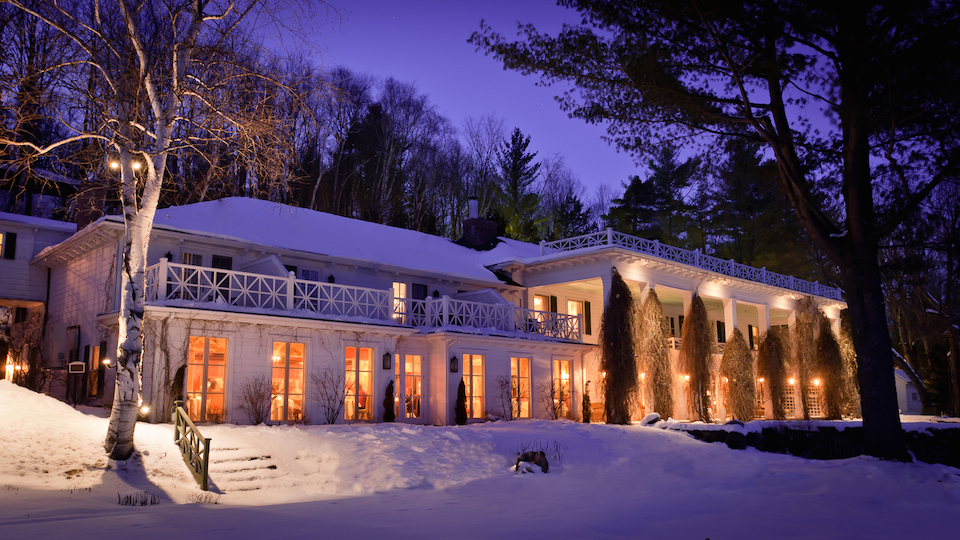
Manoir Hovey, North Hatley, Quebec
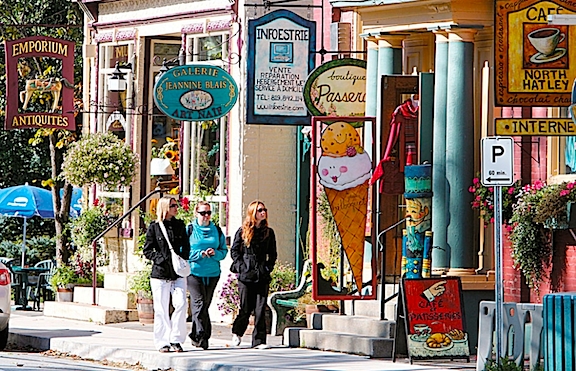 trees—pines and red
oak, yellow birch and spruce. Mallards and
grackles, chickadees and gannets, peregrine
falcons and golden eagles spot the skies. Lakes
lie within rich reedy valleys. Pious French
names like Saint-Benôit-du-lac and
Saint-Étienne-de-Bolton vie with those of English
and Indian townships, like Georgeville, Ogden,
Magog and North Hatley.
trees—pines and red
oak, yellow birch and spruce. Mallards and
grackles, chickadees and gannets, peregrine
falcons and golden eagles spot the skies. Lakes
lie within rich reedy valleys. Pious French
names like Saint-Benôit-du-lac and
Saint-Étienne-de-Bolton vie with those of English
and Indian townships, like Georgeville, Ogden,
Magog and North Hatley. This last, on the northern tip of Lake Massawippi, has been a tourist draw since the late 19th century, after a railway line was put through the region. North Hatley (left) and its neighbor Hatley drew immigrants a century earlier, and many grew rich from agriculture, wood harvesting, and potash (used to make soap). One curiosity of seasonal emigration was the influx of Americans from the South, who bypassed New England in preference to Canada in search of grand summer residences.
Some of
their mansions were later transformed into deluxe
inns, while in the little town of North Hatley,
bed-and-breakfasts popped up like wildflowers among
art galleries and cafés. Since 1982, the Festival du
Lac Massawippi has centered around music recitals
held in the  Sainte-Élizabeth
Church and in the springtime al fresco on grounds of
Dreamland Park. For
the more daring visitor, try the Velo Volant, a
suspended recumbent bike on a zip line on which you
can peddle above a forest canopy, 100 feet high.
Sainte-Élizabeth
Church and in the springtime al fresco on grounds of
Dreamland Park. For
the more daring visitor, try the Velo Volant, a
suspended recumbent bike on a zip line on which you
can peddle above a forest canopy, 100 feet high.
Of course, much of the region’s
attractiveness is in spring, summer and fall, when
hiking in Les Gorges de Coaticook park, fishing and
hunting are most popular. But in winter these are
replaced by skiing (there are five ski resorts in
the Eastern Townships), snowmobiling, skating, and
ice fishing on the lakes, whose ice thickness can
grow to several meters.
Year-round,
the Abbey of Saint-Benôit-du-Lac is a Benedictine
monastery—you can still listen to their Gregorian
chants in the evening—and there are a dozen wineries
in the region.
There
is still a good deal of agriculture in the area, and
one of the genial pleasures is to visit one or two
of the many cheese makers, like the 163-hectare organic La
Station de Compton
(right),
which has four generations of family experience
maintaining a herd of 50 Holstein dairy cows. They
make an array of five excellent cheeses with names
like Alfred, Hatley and Comtomme, all sold in the
little boutique here, along with their own maple
syrup.
On a
recent visit to the region, I stayed at the
magnificent Manoir
Hovey, sequestered in timberland outside of
North Hatley. The structure was originally a summer
home built in 1899 by Henry Atkinson, owner of
Georgia Power.
The design was inspired by George
Washington’s 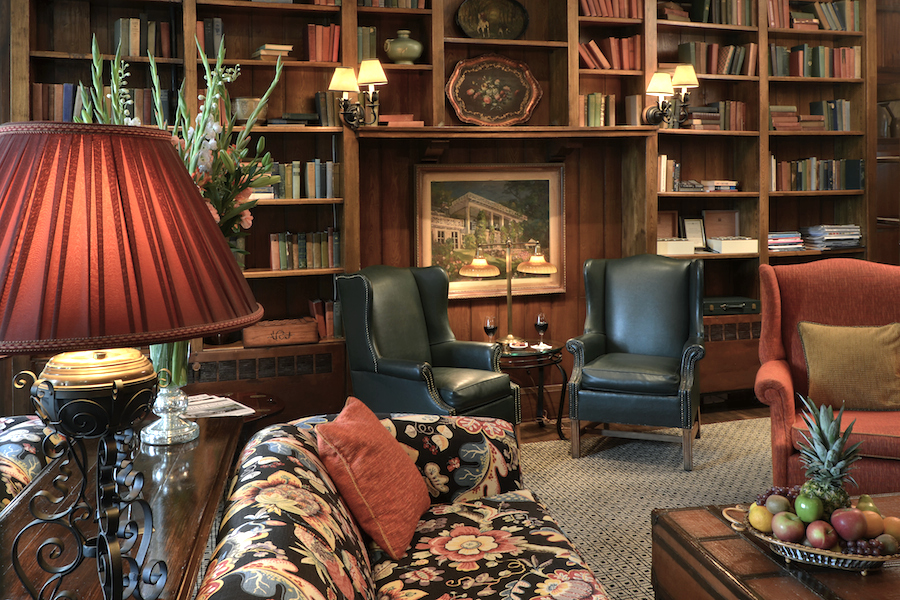 home at Mount
Vernon. After changing hands several times, it
became an inn in 1950, then, in 1979, Kathryn and
Stephen Stafford bought and renovated it. Their son,
Jason, is now managing director of this Relais &
Châteaux property of 30 rooms with seven suites,
five individual cottages and one chalet for up to
eight people, all surrounded by gardens and set on
the shore of the lakefront. (All prices in this
article are in Canadian dollars.)
home at Mount
Vernon. After changing hands several times, it
became an inn in 1950, then, in 1979, Kathryn and
Stephen Stafford bought and renovated it. Their son,
Jason, is now managing director of this Relais &
Châteaux property of 30 rooms with seven suites,
five individual cottages and one chalet for up to
eight people, all surrounded by gardens and set on
the shore of the lakefront. (All prices in this
article are in Canadian dollars.)
The greeting by the entire staff
is as warm as the roaring fireplace in a Library
Room (left)
that for me would be the perfect “Man Cave,” a space
with hundreds of books, cushy sofas, thick blankets,
and access to good spirits from the bar next door,
which leads to Le Hatley restaurant. The
dining room (below)
is very beautiful, done with the local environment
in mind, with birch-like wall coverings, French
windows overlooking the lake, a big fireplace with
its black logs crackling. Tables are luxuriously
set, chandeliers glow, and candles light the tables,
but there is no sense of enforced formality here. The wine
list is exceptional, not just for its breadth and
depth but for the number of increasingly fine
Canadian wines offered. (There is also a Tap Room
Pub a few steps away for more casual fare.)
The kitchen at Manoir Hovey is overseen by
Executive Chef Roland Menard, here for three decades
now, and Chef de Cuisine Francis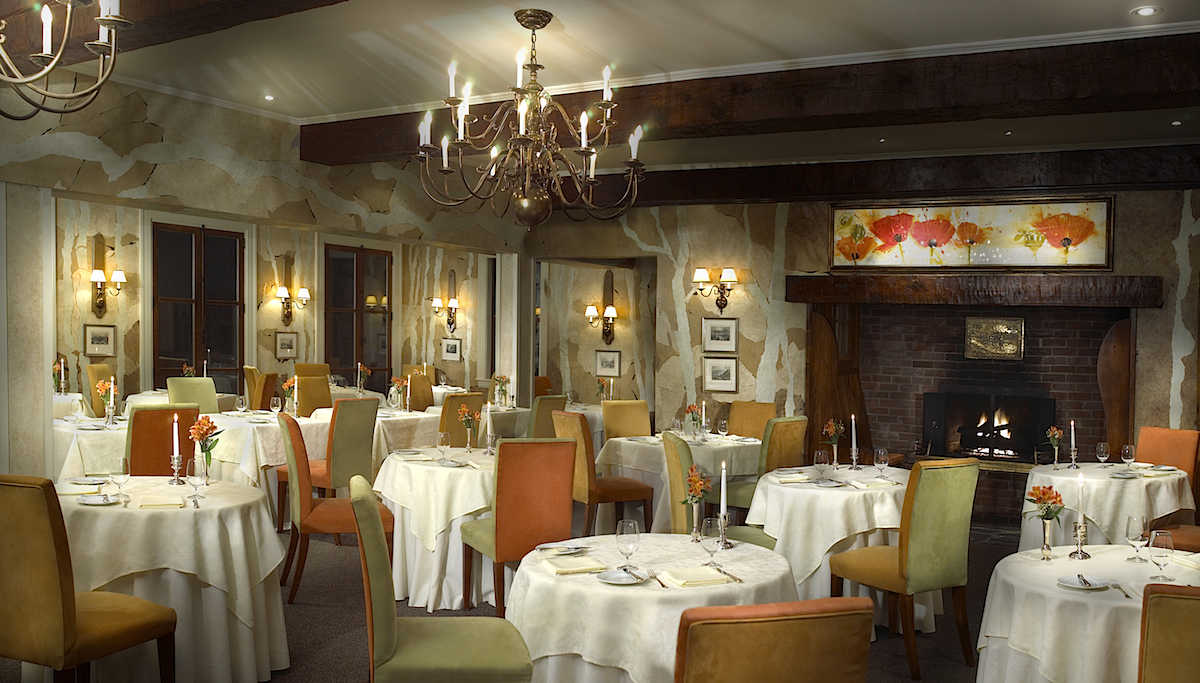 Wolf, who
has worked at Alain Déclassé, Daniel and Aureole in
New York. As much as possible, Canadian ingredients
are used, not least dozens of unusual herbs, spices,
flowers and foraged mushrooms incorporated into the
cuisine, which has strong French underpinnings.
Wolf, who
has worked at Alain Déclassé, Daniel and Aureole in
New York. As much as possible, Canadian ingredients
are used, not least dozens of unusual herbs, spices,
flowers and foraged mushrooms incorporated into the
cuisine, which has strong French underpinnings.
Although
I found several dishes very fussy in presentation,
with a daunting number of ingredients arrayed around
the plate to little effect, the heartiness of the
autumn menu was manifest in dishes like an acorn
squash soup with Canadian foie gras flan, kohlrabi,
parsnip, beans and leeks. Canadian beef of full flavor
came pan-seared, with potatoes Anna, sautéed
mushrooms with shallots, and a red wine sauce, and I
was delighted to see grilled guinea fowl with
parsnip puree, barley and a dried grape sauce. One of the
justifiably popular items at Le Hatley is the
sweetbreads with artichoke foam, kohlrabi, heirloom
squash and a hazelnut emulsion (though I don’t see
why there should be a $5 supplement on a $70
table d'hôte menu for inexpensive offal).
I recommend you try a sampling of
local cheeses (another $8 supplement),
wonderfully displayed on a cart and explained by the
captain. For
dessert, I liked the dark chocolate custard cream
meringue with bitter orange puree ($5 supplement).
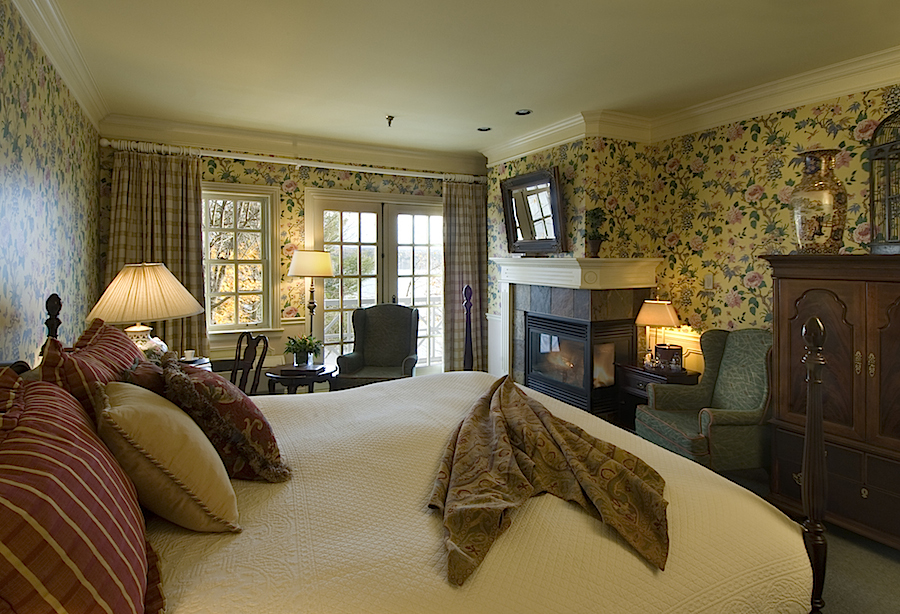 After a glass
of Canadian Ice Wine, picking a book from the
shelves of The Library, climbing the stairs to my
bedroom and getting under the covers, with embers
hissing in the fireplace and a silvery half moon
over the reflecting lake, I had a feeling of true,
quiet contentment and a sense of being much farther
from Montréal than I was.
After a glass
of Canadian Ice Wine, picking a book from the
shelves of The Library, climbing the stairs to my
bedroom and getting under the covers, with embers
hissing in the fireplace and a silvery half moon
over the reflecting lake, I had a feeling of true,
quiet contentment and a sense of being much farther
from Montréal than I was.
Time
seemed to lengthen out, a weak sunrise came on
slowly, the lake glistened with glass-like ice, and
the cold cutting air cleared my head. Actually,
the only thought I had in my head was to go down for
a good breakfast of eggs and bacon, coffee and
croissants, and to let the day roll through me. I was on
Canadian time.
Manoir Hovey is at 575
Rue Hovey, North Hatley, Quebec, one hour’s drive
from Montreal, 20 minutes from the Vermont border, 4
hours from Boston, 6 hours from NYC; 800-661-2421
or 819-842-2421.
Le Hatley Restaurant is open for breakfast,
lunch and dinner daily; table d’hôte $70. Rooms
start at $95 (lodging only) or $160 (MAP breakfast,
dinner, gratuities); Suites start at $230 (lodging
only) or $295 (MAP - breakfast, dinner, gratuities).
❖❖❖
By John Mariani
KINGSIDE
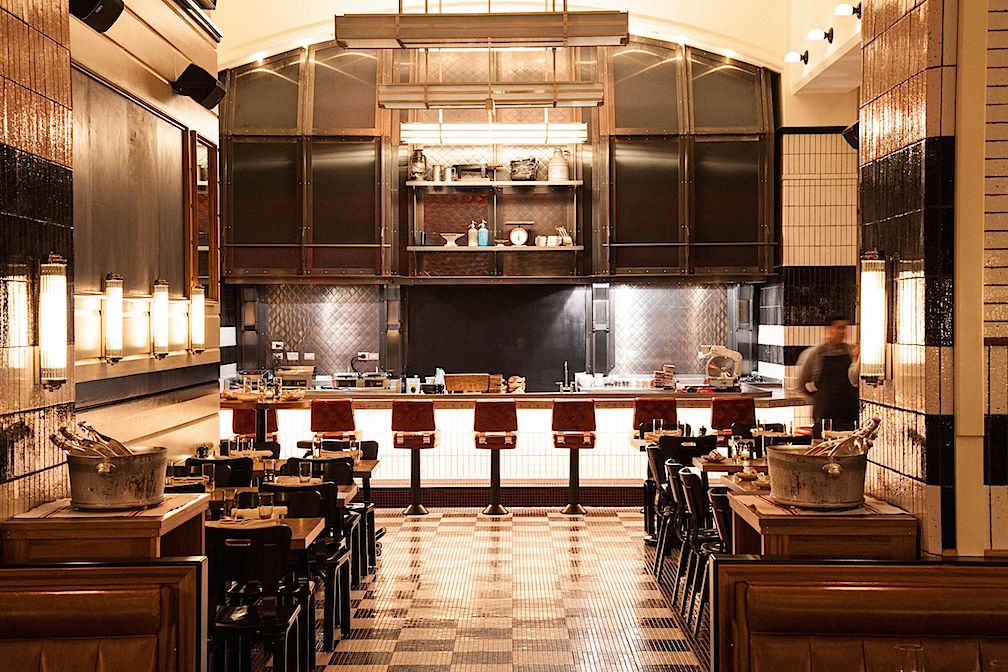
124 West 57th Street (between 6th & 7th Avenues)
212-707-8000
kingside-restaurant.com
Thirty years ago when the term “New American
Cuisine” was coined in imitation of France’s
la
nouvelle cuisine, it was soon extrapolated
into New Southern Cuisine, New South Western, New Pacific
Northwest Cuisine, and so forth across the map.
(California spitefully split into Southern and
Northern camps.)
The distinctions among them pretty much
petered out in the ‘90s, when global influences,
the Mediterranean Diet, and other fads blurred
any reasonable definition of what New American
Cuisine had become.
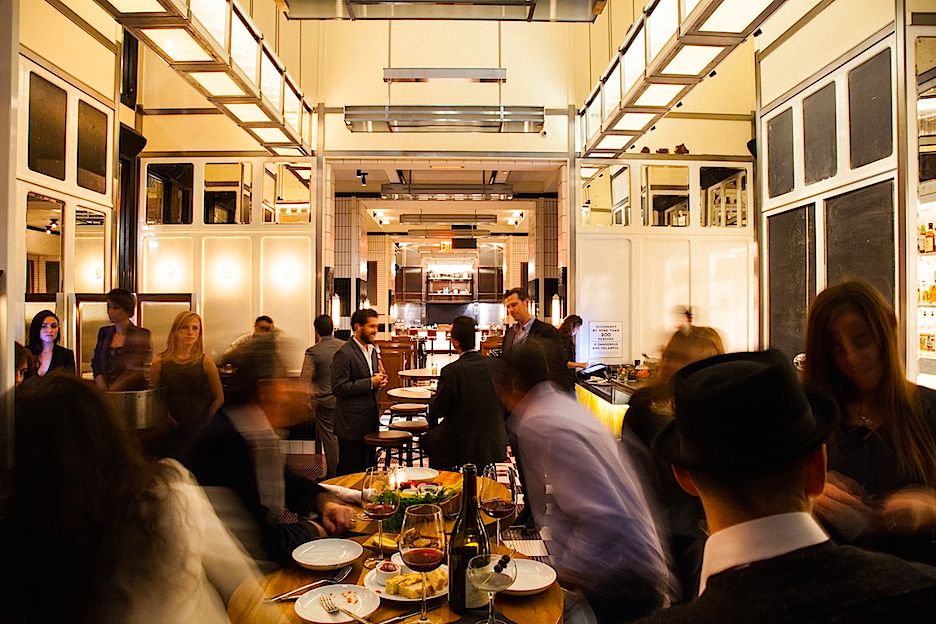 The
contemporary, wholly fatuous definition often
given these days is that American Cuisine is
“whatever Americans eat,” which, if true, would be
mostly frozen, boxed and canned food like Spam, Stouffer’s
Macaroni and Cheese, and Frito-Lay corn chips.
The
contemporary, wholly fatuous definition often
given these days is that American Cuisine is
“whatever Americans eat,” which, if true, would be
mostly frozen, boxed and canned food like Spam, Stouffer’s
Macaroni and Cheese, and Frito-Lay corn chips.
My idea of what American food has become is
pretty close to what’s being served at the
year-old Kingside, whose chef-partner Marc Murphy
(with Scott Gerber of the Gerber Group, below) has
been focusing in on the kind of dishes that
Americans who dine out are always happy to see,
from a Kingside burger with giardiniera
relish, soppressata
and white cheddar ($21) to pan-roasted scallops
with butternut squash, bacon caponata
and brown butter ($34), ending off with caramel
pudding with bourbon whipped cream and slivered
almonds ($10).
(I’m stifling the urge to use the word
“yum.”)
Murphy, whose background took inspiration from his
mother's and grandmother’s kitchens, from French
master chef Jean-Louis Palladin, and from
extensive worldwide travel, opened Landmarc in
TriBeCa ten years ago, then another in the Time
Warner Center, and a surf shack called Ditch
Plains. He
still takes global ideas and ingredients and
adapts them all to an American sensibility that
bespeaks generosity, regional culinary tradition,
a love of good salads, and a Yankee sweet tooth. There
is no fuss about his food, but it takes the kind
of experience Murphy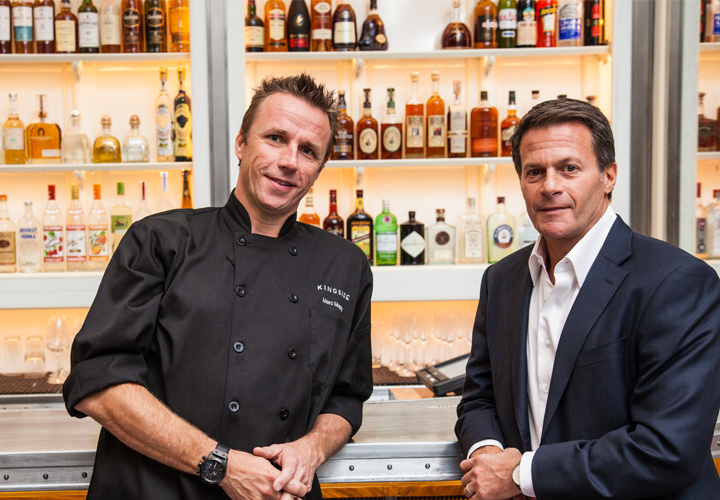 has to bring it all
off with such grace.
has to bring it all
off with such grace.
Kingside
is located in the Viceroy Hotel (near Carnegie
Hall and the Theater District), with 115 seats, 38 at a
very lively bar (above)
whose high noise level fortunately does not
intrude too much into the good-looking dining
room, with its tile work walls and a convivial
chef’s counter backed by quilted stainless steel. Nicely
lighted, with wooden tables and booths, the room
manages to balance the feel of a swank midtown New
York restaurant with that of a fast-paced,
streamlined middle-American diner. Service
is amiable, knowledgeable, and attentive. The wine
list of about 70 bottlings offers several by the quartino and
half-bottle, with the majority of the list under
$50 for whites and $60 for reds. (Now I’m stifling
a “Yay!”)
You could easily enjoy a good nosh at
Kingside before heading for a concert or play:
there are three raw items ($19-$21) of tuna,
scallop and fluke, and charcuterie and cheeses
($10-$12).
Then
there
are a dozen small plates, with plenty of vegetable
options. Hay-aged,
assertive pecorino graces baguette toast made
sweet and milder with truffle honey and ricotta
($16), while lobster is diced with mustard seed,
tarragon and fennel on toast to very delectable
effect ($20).
Perfectly roasted foie gras takes a sweet balm
from grapes and a splash of rich Sauternes. A
mushroom-flecked
burrata
arancini ball was enhanced with 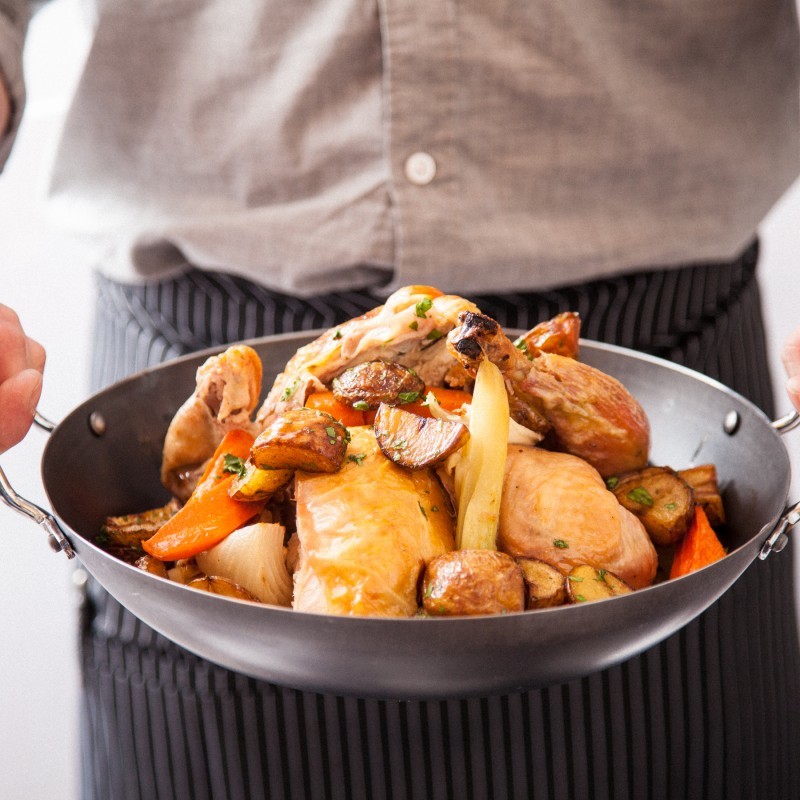 truffle fondue ($15), though the
fried arancini
were a
bit bland.
truffle fondue ($15), though the
fried arancini
were a
bit bland.
You don’t see snails on
menus that often anymore, but anyone who likes
them and wants to cook them should taste the way
Mr. Murphy renders them, with bone marrow and
garlic butter ($17). Few snails ever had a better
bed to curl into.
The
special that evening was house-made pasta lavished
with white truffles—at $45 something of a modest
price these days in New York. My
favorite entrée was the thick braised pork shank
($32), coming off the bone and oozing all the
flavors it had absorbed, with roasted shallots,
escarole and a pork jus. Also
applauded at our table was a brick-roasted baby
chicken (left)
with fall vegetables, panzanella salad,
and black garlic ($30). The scallops I mentioned
were as good as most in New York, if not
outstanding, and the same might be said for the
burger (I recall the outrage years ago when `21’
Club charged $21 for its burger. Times have
changed.)
Salt-and-pepper fried potatoes were gilded
with a sweet onion aïoli ($10), and
buttery pommes
fondant ($10) had enchanting, velvety
texture and flavor,
while seasonal vegetables ($10) were packed
with enlivening spices.
When I see caramel pudding on a menu—rare,
indeed—I order it and allow myself to slip into a
nostalgia reverie for this childhood dessert. Mr. Murphy
brought it all back to me, with the addition of
grown-up whipped cream and pretzel crumble ($10).
So,
although there are some French and Italian
preparations on the menu at Kingside, they become
very much part of the fabric of this very American
menu. Mr.
Murphy has never tried to be trendy, only to be
very, very good.
Kingside
is open for breakfast, lunch and dinner
daily, with brunch on Sunday.
By John Mariani

This is a new Golden Age for
whiskies, spirits whose popularity was long
ago eclipsed by tasteless vodkas and white
rums. The emergence of single malt Scotches,
small batch bourbons, even a resurgence of
new ryes, has made it a hot category
again--and not a cheap one. Indeed,
the price of a lot of what’s now out there
is not based on anything extraordinary about
the whiskey, and some, like rare Pappy Van
Winkle bourbon, have become such a cult
spirit that people are paying whatever it
takes--$250 and up--to get hold of a bottle
that retails (if you could find it) at
$80-$108. Now that the holidays are
upon us, so-called “brown spirits” are
always a good gift idea, so here are some
that I’ve been impressed by, not because
they are so rare or come in a really nifty
bottle, but because they are really quite
distinctive.
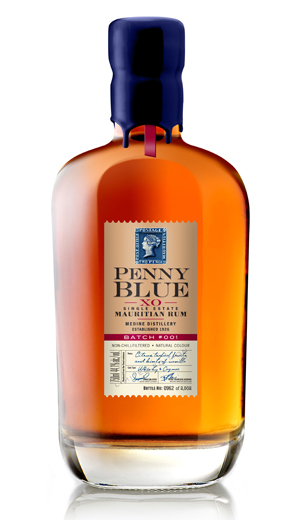 Penny
Blue XO Single Estate Mauritian Rum
($75-$80)--“XO” (extra old) is not a label term
you see outside of Cognac, although its
distributor, Anchor Distilling, says the small
batch (5,946 numbered bottles for the whole world
this year) is matured in French oak Cognac casks. The
name Penny Blue alludes to one of the world’s
rarest stamps, with twelve in existence, and it’s
made by Doug McIwor of Berry Bros. & Rudd of
London and
the Master Distiller Jean Francois Koenig on the
island of Mauritius. Rums from that African
island don’t leave it often, so the complex, spicy
Penny Blue is not going to be in everyone’s
Christmas stocking this year.
Penny
Blue XO Single Estate Mauritian Rum
($75-$80)--“XO” (extra old) is not a label term
you see outside of Cognac, although its
distributor, Anchor Distilling, says the small
batch (5,946 numbered bottles for the whole world
this year) is matured in French oak Cognac casks. The
name Penny Blue alludes to one of the world’s
rarest stamps, with twelve in existence, and it’s
made by Doug McIwor of Berry Bros. & Rudd of
London and
the Master Distiller Jean Francois Koenig on the
island of Mauritius. Rums from that African
island don’t leave it often, so the complex, spicy
Penny Blue is not going to be in everyone’s
Christmas stocking this year.
The Macallan Rare Cask
($300)--Available in a stunning gift box, this
Scotch is made from carefully selected oak sherry
casks, and Macallan has never shied away from an
oaky flavor in its Scotch. Master Whisky Maker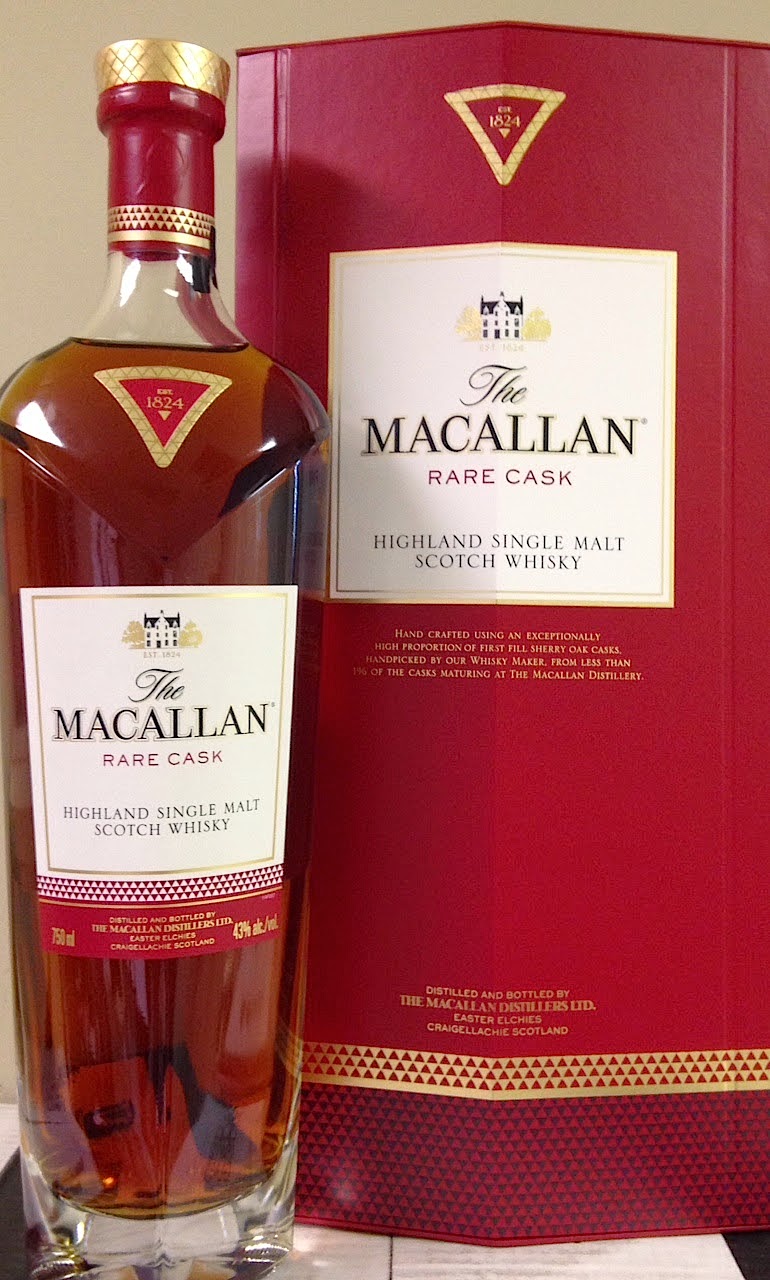 Bob Delgamo balances this with
vanilla and chocolate notes along with some
citrus, with a fine lingering finish that remains
chewy on the palate.
Bob Delgamo balances this with
vanilla and chocolate notes along with some
citrus, with a fine lingering finish that remains
chewy on the palate.
Michter’s US*1 Toasted Barrel
Bourbon ($48)--The novelty here is that
this bourbon is aged in two different barrels—one
for maturation, one for finishing in a cask never
charred, as is otherwise typical. At 45.7
percent alcohol, it’s not tame. Michter’s made its
rep on the basis of its aggressive 10-year-old
ryes, which sell around $70, and it wants its
bourbons to show innovation rather than just small
production.
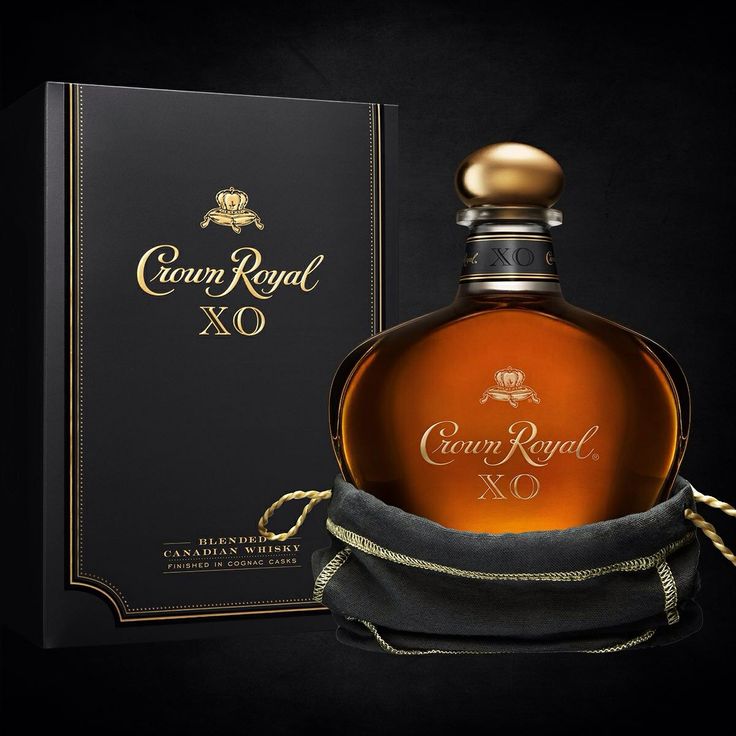 Crown
Royal XO Blended Canadian Whiskey ($50)—Just as rye has created
its own niche market, there is renewed interest in
Canadian whiskey—the thing you used to drink with
7-Up in college—and the old distillers are falling
over themselves to come up with a new edge. Also
using that “XO” word, Crown Royal’s new whiskey
also matures in old Cognac barrels, and it joins
others in the brand’s portfolio like Crown Royal
XR (its “rarest” whiskey), Maple Finished, Crown
Royal Deluxe, and Crown Royal Black. The XO is
culled from 50 whiskies and is smoother than most
Canadian spirits, with far more charm and
elegance.
Crown
Royal XO Blended Canadian Whiskey ($50)—Just as rye has created
its own niche market, there is renewed interest in
Canadian whiskey—the thing you used to drink with
7-Up in college—and the old distillers are falling
over themselves to come up with a new edge. Also
using that “XO” word, Crown Royal’s new whiskey
also matures in old Cognac barrels, and it joins
others in the brand’s portfolio like Crown Royal
XR (its “rarest” whiskey), Maple Finished, Crown
Royal Deluxe, and Crown Royal Black. The XO is
culled from 50 whiskies and is smoother than most
Canadian spirits, with far more charm and
elegance.
Knob Creek Single Barrel Reserve ($41)—You can tell how thinly
spirits makers are slicing the onion when you see
a label that boasts of being a “single barrel”
bourbon then adding “Reserve,” promising it is the
only single barrel, 120 proof example aged for
nine years.
That’s a long time to keep a bottle in the
barn, and the aging has the effect of mellowing
the texture and bringing out more nuance in a
bourbon that comes from just a single barrel,
which means each one varies in flavor.
Springbank Cask Strength Single
Malt
($70-$85)—The come-on here is that this
Campbeltown Scotch comes straight from the barrel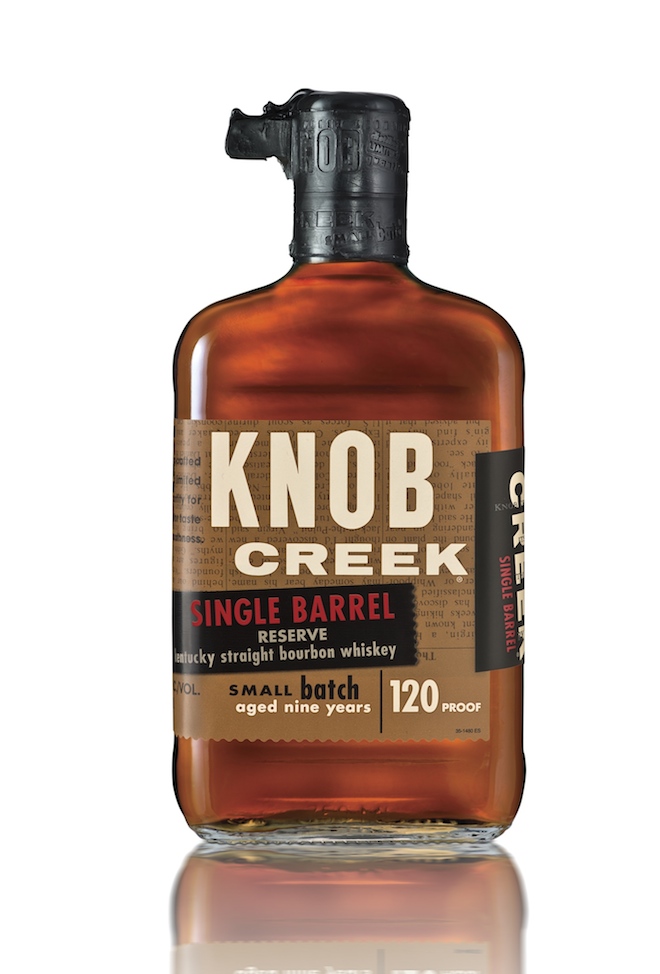 without
any dilution, so it’s a powerhouse. It’s
also got the characteristic smokiness of
Campbeltown with a good dose of peatiness. It’s
really quite distinctive and a true Scotch lover
will want it in his cache. At 12
years old, it’s two yers older than their usual
10-year-old.
It’s also nice to know that Springbank is
one of only two (the other is Kilcoman) of the
region’s distilleries in Scotland to malt their
own barley and go through every step of production
on premises. Still best enjoyed splashed with a
little water or seltzer in a crystal glass.
without
any dilution, so it’s a powerhouse. It’s
also got the characteristic smokiness of
Campbeltown with a good dose of peatiness. It’s
really quite distinctive and a true Scotch lover
will want it in his cache. At 12
years old, it’s two yers older than their usual
10-year-old.
It’s also nice to know that Springbank is
one of only two (the other is Kilcoman) of the
region’s distilleries in Scotland to malt their
own barley and go through every step of production
on premises. Still best enjoyed splashed with a
little water or seltzer in a crystal glass.
Cutty Sark
Prohibition Edition Blended Scotch Whiskey ($32)—Cutty Sark
was founded during Prohibition in America and when
that idiocy ended, the company was well positioned
to capitalize on the thirst of Americans for good,
cheap blended Scotch, which grew lighter in body
after the war. This “Edition” hearkens back to a
fuller-bodied style favored in the 1920s, and
there is certainly more complexity to it than
ever, made mostly from a blend of Speyside
whiskies, bottled at 100 proof. It’s
got a bite, and there’s no apology for that. Still
at its best on the rocks.
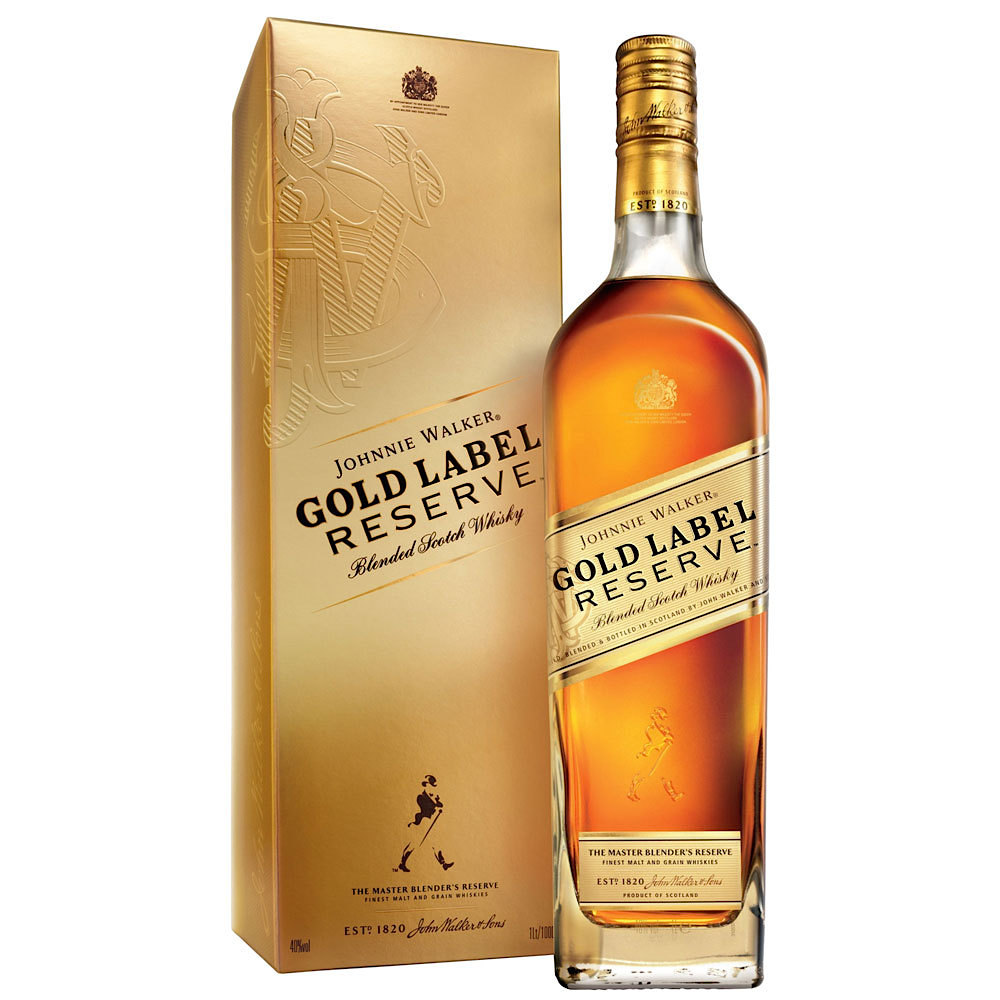 Johnnie
Walker Gold Reserve ($85)--Welcome
back, Johnnie Gold! Well, sort of. Gold,
originally a limited edition mainly for the Asian
market, was discontinued, but now it has been
introduced in a one-of-a-kind format bottle,
without the prior “18 Year Old” statement on the
bottle. It has the characteristic creamy texture,
peatiness, lots of oak, and sweet notes of all the
JW issues—24 of them--including the basic Red
Label, the smoky Double Black, and top-of-the-line
Blue Label, at $225. The Gold is generally
available in a regular bottle, but a gift edition
is gold-colored in a gold box guaranteed to
impress the recipient.
Johnnie
Walker Gold Reserve ($85)--Welcome
back, Johnnie Gold! Well, sort of. Gold,
originally a limited edition mainly for the Asian
market, was discontinued, but now it has been
introduced in a one-of-a-kind format bottle,
without the prior “18 Year Old” statement on the
bottle. It has the characteristic creamy texture,
peatiness, lots of oak, and sweet notes of all the
JW issues—24 of them--including the basic Red
Label, the smoky Double Black, and top-of-the-line
Blue Label, at $225. The Gold is generally
available in a regular bottle, but a gift edition
is gold-colored in a gold box guaranteed to
impress the recipient.
Laphroaig Islay Single Malt 10
Years Original Cask Strength
($66)--Now, if you really like briar and peat and
smoke in your whisky, Islay is the place to find
it, and one of the finer, more complex versions is
from Laphroaig.
You either like such eyebrow-raising
Scotches or don’t, but you get what you pay for
here. The whisky is aged in seasoned, charred oak
barrels and slightly barrier-filtered just to
remove the small char particles present, so the
Scotch may even appear a tad cloudy. 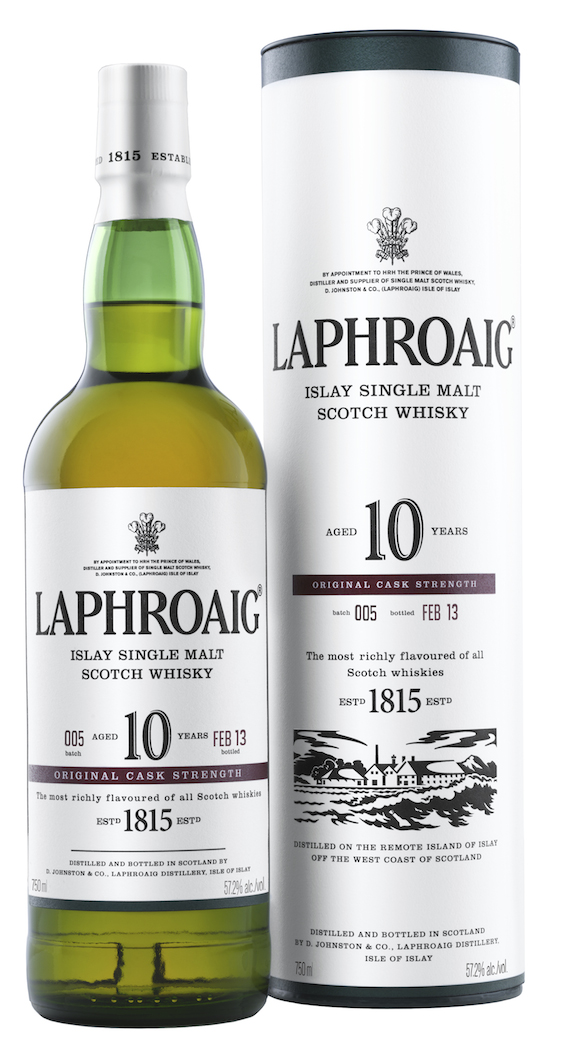
GlenDronach Distillery 15 Year Old
Tawny Port Wood Finish
($80) and The
GlenDronach Cask Strength Batch ($150)--These
are two new Scotches from The GlenDronach
distillery (founded 1826), which foundered for a
while but is now back in good hands. The Old Tawny
Port Wood Finish takes on some of the sweet
character of Port, mellowing the whisky and adding
caramel notes. The Cask Strength Batch is matured
in Sherry casks, which impart their own flavors of
nuttiness and orange.
The BenRiach Horizons 12 Year Old
Triple Distilled
($80) --This sophisticated expression of Scotch is
distilled three times, rather than the usual two,
which takes away the rough edges and burn and
replaces them with creamy, honeyed flavors. BenRiach
also makes a Solstice 2nd
Edition 17 Year Old ($100) that uses both
heavily peated and unpeated malted barley, which
means it’s got plenty of snarky ballast under the
first layers of fruit and spice notes.
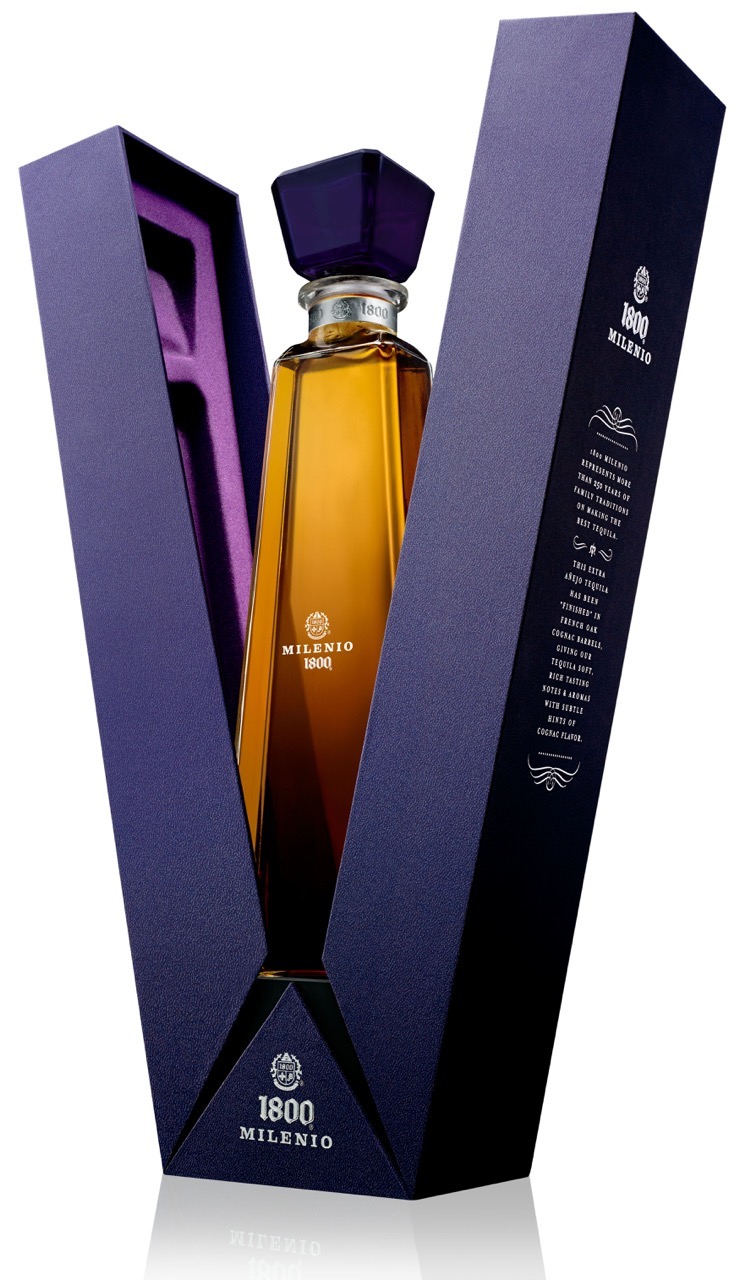
1800 Tequila Milenio ($225)—Tequila is
rarely thought of as a brown spirit, but the aged
versions take on a definite color. 1800 Tequila’s
second release of Milenio (the first produced in
2000), made from 100 percent blue agave, is double
distilled and aged
in Cognac barrels for five years, making this a
tequila to be sipped like any fine brown spirits,
not to be sloshed into a blender to make a
margarita. Excellent also with Mexican-style tapas
and Serrano ham. I suspect this is one of the
priciest tequilas ever made.
The Glenlivet (owned by Chivas
Regal), which was one of the first Single Malt
Scotches to start the bandwagon rolling
back in the 1980s, now has sales of 11 million
bottles each year, so it is trying
something new in its small batch, chill filtered
Nàdurra (“natural”) line from
Speyside with an Oloroso ($79) matured exclusively
in ex-sherry casks from Jerez, which adds a
lovely touch of creaminess and sweetness, with
48 percent alcohol. (They also will
release The
Glenlivet Nàdurra First Fill Selection [$79] drawn from casks made
from American White Oak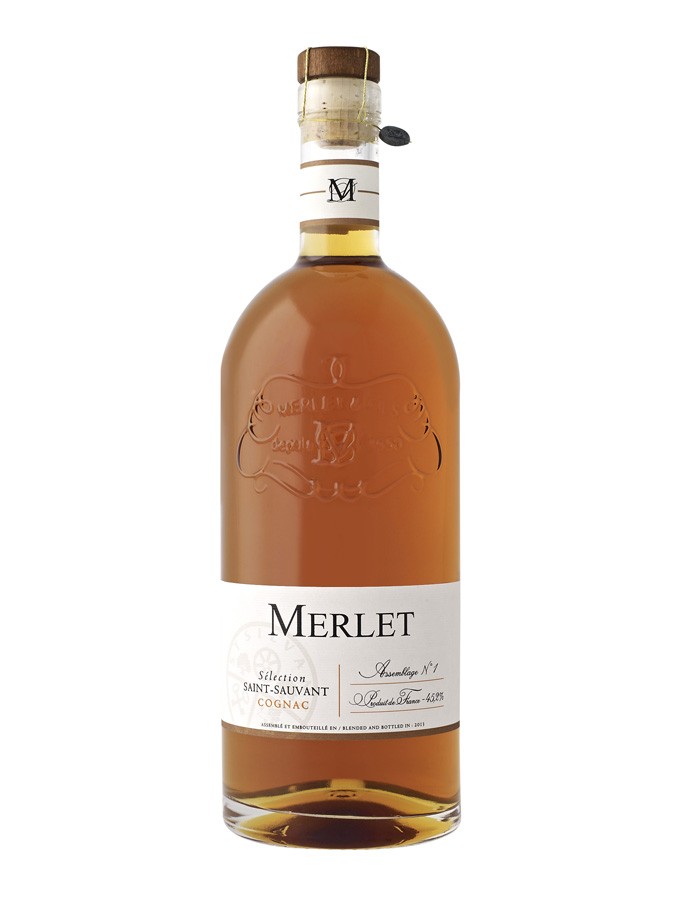 next spring.)
next spring.)
Merlet Sélection
St. Sauvant “Assemblage N°1” Blend N°1
Cognac ($90-$100)—Just as Single Malts
saved Scotch from further decline, limited edition
Cognacs have proven themselves the gateways to fire
interest in what are among the world’s finest
brandies. This Assemblage, bottled last year, is a
blend of eaux-de-vie from the Petite Champagne and
Grande Champagne regions, aged over 10 years, along
with brandies from the Fins Bois 1992 and 2001 and Petite
Champagne 1993. Fifth
generation distillers Pierre and Luc Merlet are
trying to show different profiles of Cognac, and
production of Assemblage totals only 800 bottles for
the entire world.
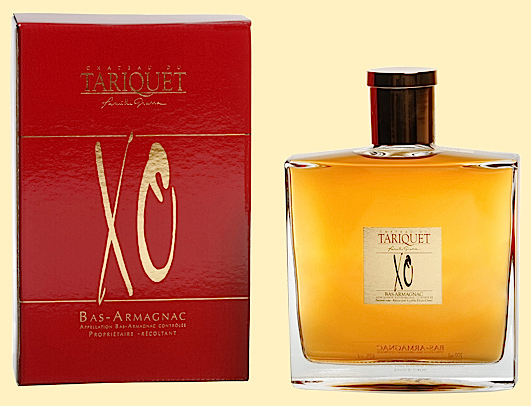
Tariquet XO Armagnac
($50-$65)—Moreso than Cognac, Armagnac is
made in small production, in the region of Gascony,
so the distillers have been very active in finding
ways to bring attention, including vintage dating,
to these marvelous, robust brandies, made in
column stills rather than in pot stills, as in
Cognac. Armagnacs tend to be a little more
rugged than Cognacs, and prices for the best of
them are usually lower. Now overseen by Yves
Grassa, Tariquet, which dates to 1912,
is an Armagnac made to be drunk younger than
tradition has dictated--though the XO, made from
Baco Blanc and Ugni Blanc, is aged 15 years--meaning
the spirits have slightly lower alcohol level and a
burst of spicy aromas and flavors. 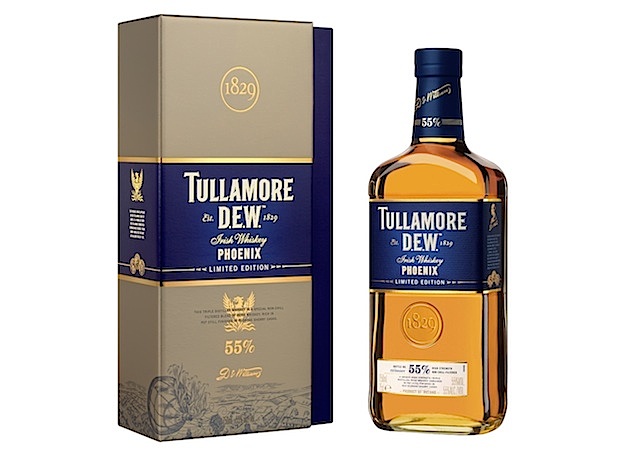
Tullamore
D.E.W. Phoenix ($55)--The roaring double
digit growth over the last decade of Irish
whiskies has forced established labels have to
find new ways to compete. Tullamore, founded
in 1829, goes neck and neck with Jamesons and
Bushmills in sales and recognition, so the brand
has come up with this
limited edition, which commemorates
the day in 1785 when Tullamore witnessed a
devastating hot-air balloon accident that
destroyed much of the town. Rising from its
ashes, the town put a phoenix on its coat of
arms, hence the name of the whiskey, a
❖❖❖
VIVID WRITING, LOONEY TUNES DIVISION:

"The crust at first-rank Roman pizzerias like Da Remo in Testaccio is often compared to a cracker, but crackers crumble. This doesn’t. It is more like the crust on a loaf of peasant bread from which all the soft crumbs have been stripped. It is durably crisp, unbendingly flat, and when you hold a slice by the edge, the rest of it juts out above the table like a cliff. Because everything I know about cliffs was learned from Wile E. Coyote, I kept waiting for the tip on each Marta slice to give way, but it never did."--Pete Welles, "Marta," New York Times (12/3/14)
LOOKS DEE-LISH!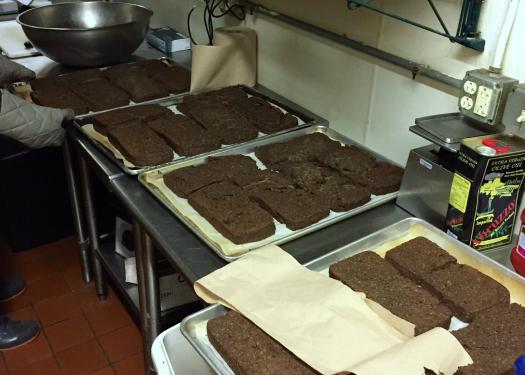
Dogfish Head brewery has come out with a new product
called Beer for Breakfast,
which founder Sam Calagione says has
"everything-but-the-breakfast-nook stout"
and "a beer that has the most diverse
group of ingredients" tied to the day's most
important meal, which includes maple syrup,
applewood-smoked barley, lactose (or milk sugar),
cold-brew coffee, and 25 pounds of scrapple
("a cross between bacon, a sausage patty, and a corn
muffin") The offering (right) will be served
exclusively on draft at the Rehoboth Beach,
Delaware, brewpub.
❖❖❖
ONE TRICK HOLIDAY

by Cristina Mariani-May
co-CEO of Banfi
Vintners America's leading wine importer
Since starting this column, I
have prided myself in discussing a broad selection of
wines based on the theme of our monthly discussion. But with the
holiday season in full swing, I have to say there is one
wine that is top of mind and deserves its own “top ten”
reasons to have plenty of it on hand for the holidays:
Rosa Regale. It
has become America’s fastest growing sparkling wine, and
with good reason – it tastes heavenly!
Here’s the Letterman-inspired list:
10. A “Naughty” Way to
Get on the “Nice” List
They say imitation is the sincerest
form of flattery; when Santa sees Rosa Regale’s bright
red color trimmed with a foamy white froth, how could he
not feel honored… and leave a little something extra in
your stocking?
9. Rosa for a Crowd
The pretty “Princess Decanter” inspired
bottle also comes in a party-size 1.5 Liter, the
equivalent of two bottles – great for when friends come
over, and a lot more conservative if anybody starts
counting corks.
8. Romantic Rosa
The 375ml half bottle is perfect for
that romantic encounter…
7. Rosa & You
The 187ml single serving is just the
right indulgence for the deserving you…
6. Holiday Decorating
Hint
Think about the possibilities with that
pretty bottle and all those different sizes – filled
with colored water, pebbles, sand, jelly beans or 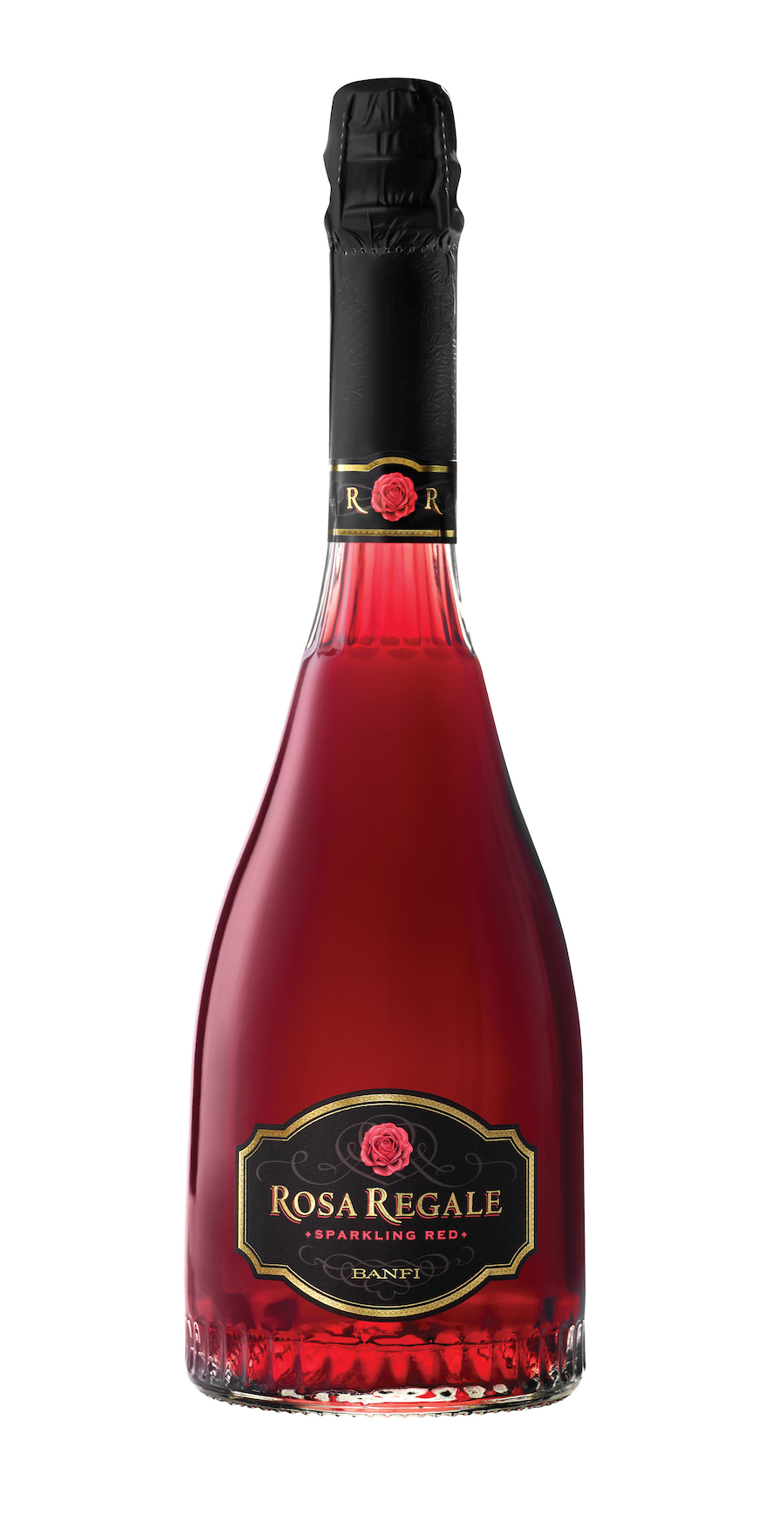 whatever.
A classy candle holder or centerpiece; the wire
hood could even be manipulated to hang the smaller
bottles from the tree like ornaments or festively
decorate the house!
whatever.
A classy candle holder or centerpiece; the wire
hood could even be manipulated to hang the smaller
bottles from the tree like ornaments or festively
decorate the house!
5.
Versatility
Savory appetizers? What could be
more festive and welcoming than Rosa Regale. Roast holiday
ham or turkey with all the trimmings? Nothing will
compliment it better than Rosa Regale. Holiday
chocolates? Let
me put it this way: some wines hold hands with
chocolates, other wines embrace chocolate; Rosa Regale
and chocolate become… intimate.
4. Prudence
At a low 7% alcohol content, a few Rosa
Regales won’t get Santa’s sled swerving. Put away the
eggnog and don’t worry about the lampshades.
3. Holiday Cheer
Festive color, happy sparkle,
deliciously fruity taste… what better way to break the
ice and set the mood?
2. The Gift that Keeps on
Giving
The ultimate hostess gift and better
than cash for the letter carrier, doorman, and so many
other special people on your list!
And the top reason for
having plenty of Rosa Regale on hand for the holidays:
1. Mistletoe
If
Cleopatra used the Rosa-Regale base of Brachetto as an
aphrodisiac charm on the likes of Julius Caesar and Marc
Anthony, who are we to argue with the ways of old?
No matter the reason you choose, may
all your holiday celebrations be festive, happy and
memorable!
Rosa Regale - Aromatic with a hint of rose petals
and raspberries, a unique sparkling ruby-red wine. A charming,
delightful and festive icebreaker, great with savories
and especially well suited to desserts, particularly
chocolate. Available
in 750ml, 375ml half bottles, 187ml single serving or
the 1.5L magnum for more generous sharing.
JUST IN TIME FOR CHRISTMAS!
 I'm proud and
happy to announce that my new book, The Hound in Heaven
(21st Century Lion Books), has just been published
through Amazon and Kindle. It is a Christmas
novella, and for anyone who loves dogs, Christmas,
romance, inspiration, even the supernatural, I hope
you'll find this to be a treasured favorite.
The story concerns how, after a New England teacher,
his wife and their two daughters adopt a stray puppy
found in their barn in northern Maine, their lives
seem full of promise. But when tragedy strikes,
their wonderful dog Lazarus and the spirit of
Christmas are the only things that may bring back
his master back from the edge of despair. WATCH
THE VIDEO
I'm proud and
happy to announce that my new book, The Hound in Heaven
(21st Century Lion Books), has just been published
through Amazon and Kindle. It is a Christmas
novella, and for anyone who loves dogs, Christmas,
romance, inspiration, even the supernatural, I hope
you'll find this to be a treasured favorite.
The story concerns how, after a New England teacher,
his wife and their two daughters adopt a stray puppy
found in their barn in northern Maine, their lives
seem full of promise. But when tragedy strikes,
their wonderful dog Lazarus and the spirit of
Christmas are the only things that may bring back
his master back from the edge of despair. WATCH
THE VIDEO “What a huge surprise turn this story took! I was completely stunned! I truly enjoyed this book and its message.” – Actress Ali MacGraw
“He had me at Page One. The amount of heart, human insight, soul searching, and deft literary strength that John Mariani pours into this airtight novella is vertigo-inducing. Perhaps ‘wow’ would be the best comment.” – James Dalessandro, author of Bohemian Heart and 1906.
“John Mariani’s Hound in Heaven starts with a well-painted portrayal of an American family, along with the requisite dog. A surprise event flips the action of the novel and captures us for a voyage leading to a hopeful and heart-warming message. A page turning, one sitting read, it’s the perfect antidote for the winter and promotion of holiday celebration.” – Ann Pearlman, author of The Christmas Cookie Club and A Gift for my Sister.
“John Mariani’s concise, achingly beautiful novella pulls a literary rabbit out of a hat – a mash-up of the cosmic and the intimate, the tragic and the heart-warming – a Christmas tale for all ages, and all faiths. Read it to your children, read it to yourself… but read it. Early and often. Highly recommended.” – Jay Bonansinga, New York Times bestselling author of Pinkerton’s War, The Sinking of The Eastland, and The Walking Dead: The Road To Woodbury.
“Amazing things happen when you open your heart to an animal. The Hound in Heaven delivers a powerful story of healing that is forged in the spiritual relationship between a man and his best friend. The book brings a message of hope that can enrich our images of family, love, and loss.” – Dr. Barbara Royal, author of The Royal Treatment.
Any of John Mariani's
books below may be ordered from amazon.com.
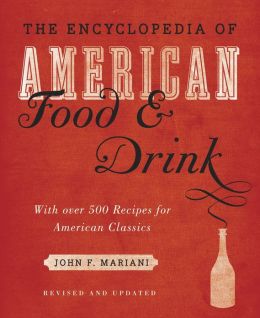 |
The Encyclopedia of American Food and Drink by John F. Mariani (Bloomsbury USA, $35) Modesty forbids me to praise my own new book, but let me proudly say that it is an extensive revision of the 4th edition that appeared more than a decade ago, before locavores, molecular cuisine, modernist cuisine, the Food Network and so much more, now included. Word origins have been completely updated, as have per capita consumption and production stats. Most important, for the first time since publication in the 1980s, the book includes more than 100 biographies of Americans who have changed the way we cook, eat and drink -- from Fannie Farmer and Julia Child to Robert Mondavi and Thomas Keller. "This book is amazing! It has entries for everything from `abalone' to `zwieback,' plus more than 500 recipes for classic American dishes and drinks."--Devra First, The Boston Globe. "Much needed in any kitchen library."--Bon Appetit. |
"Eating Italian will never be the same after reading John Mariani's entertaining and savory gastronomical history of the cuisine of Italy and how it won over appetites worldwide. . . . This book is such a tasteful narrative that it will literally make you hungry for Italian food and arouse your appetite for gastronomical history."--Don Oldenburg, USA Today.
"Equal parts
history, sociology, gastronomy, and just
plain fun, How Italian Food Conquered the
World tells the captivating and delicious
story of the (let's face it) everybody's
favorite cuisine with clarity, verve and
more than one surprise."--Colman Andrews,
editorial director of The Daily
Meal.com. "A fantastic and fascinating
read, covering everything from the influence
of Venice's spice trade to the impact of
Italian immigrants in America and the
evolution of alta cucina. This book will
serve as a terrific resource to anyone
interested in the real story of Italian
food."--Mary Ann Esposito, host of PBS-TV's
Ciao
Italia. "John Mariani has written the
definitive history of how Italians won their
way into our hearts, minds, and
stomachs. It's a story of pleasure over
pomp and taste over technique."--Danny Meyer,
owner of NYC restaurants Union Square
Cafe, The Modern, and Maialino.
|
 |
 |
 |
 |
 |
 |
 |
 |
 Everett Potter's Travel Report:
Everett Potter's Travel Report: 
 Eating Las
Vegas is the new on-line site for
Virtual Gourmet contributor John A. Curtas.,
who since 1995 has been commenting on the
Las Vegas food scene and reviewing
restaurants for Nevada Public Radio.
He is also the restaurant critic for KLAS
TV, Channel 8 in Las Vegas, and his past
reviews can be accessed at KNPR.org.
Click on the logo below to go directly to
his site.
Eating Las
Vegas is the new on-line site for
Virtual Gourmet contributor John A. Curtas.,
who since 1995 has been commenting on the
Las Vegas food scene and reviewing
restaurants for Nevada Public Radio.
He is also the restaurant critic for KLAS
TV, Channel 8 in Las Vegas, and his past
reviews can be accessed at KNPR.org.
Click on the logo below to go directly to
his site.

Tennis Resorts Online: A Critical Guide to the World's Best Tennis Resorts and Tennis Camps, published by ROGER COX, who has spent more than two decades writing about tennis travel, including a 17-year stretch for Tennis magazine. He has also written for Arthur Frommer's Budget Travel, New York Magazine, Travel & Leisure, Esquire, Money, USTA Magazine, Men's Journal, and The Robb Report. He has authored two books-The World's Best Tennis Vacations (Stephen Greene Press/Viking Penguin, 1990) and The Best Places to Stay in the Rockies (Houghton Mifflin, 1992 & 1994), and the Melbourne (Australia) chapter to the Wall Street Journal Business Guide to Cities of the Pacific Rim (Fodor's Travel Guides, 1991).


MARIANI'S VIRTUAL GOURMET
NEWSLETTER is published weekly. Editor/Publisher: John
Mariani.
Editor: Walter Bagley. Contributing Writers: Christopher Mariani,
Robert Mariani, Misha
Mariani,
John A. Curtas, Edward Brivio, Mort Hochstein,
Andrew Chalk, Dotty Griffith and Brian Freedman. Contributing
Photographers: Galina Dargery, Bobby
Pirillo. Technical Advisor: Gerry McLoughlin.
To un-subscribe from this newsletter,click here.
© copyright John Mariani 2014
